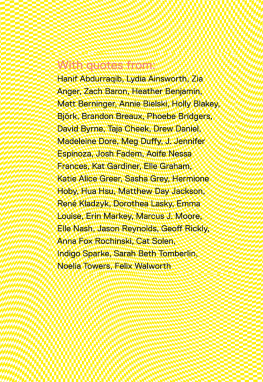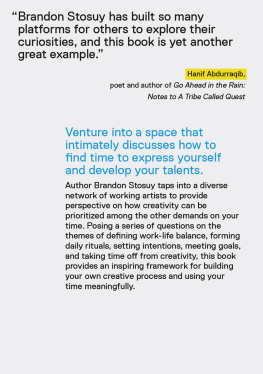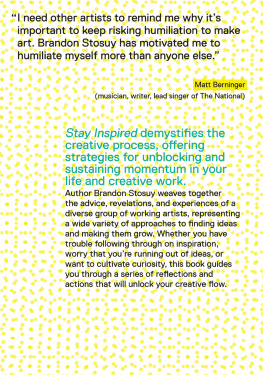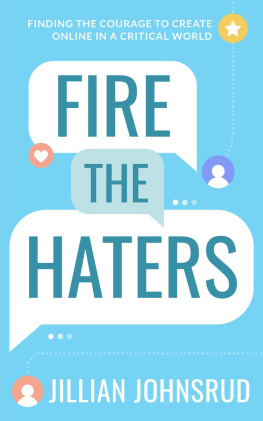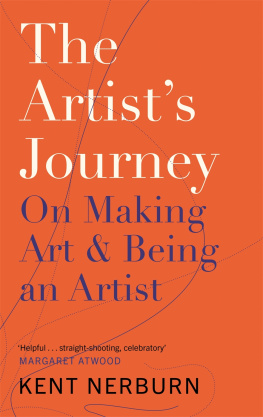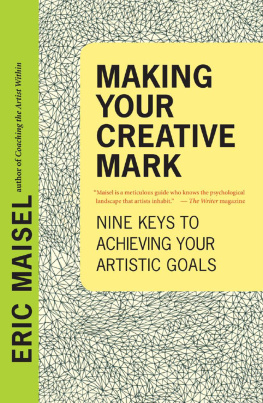Contents
Guide
Page List
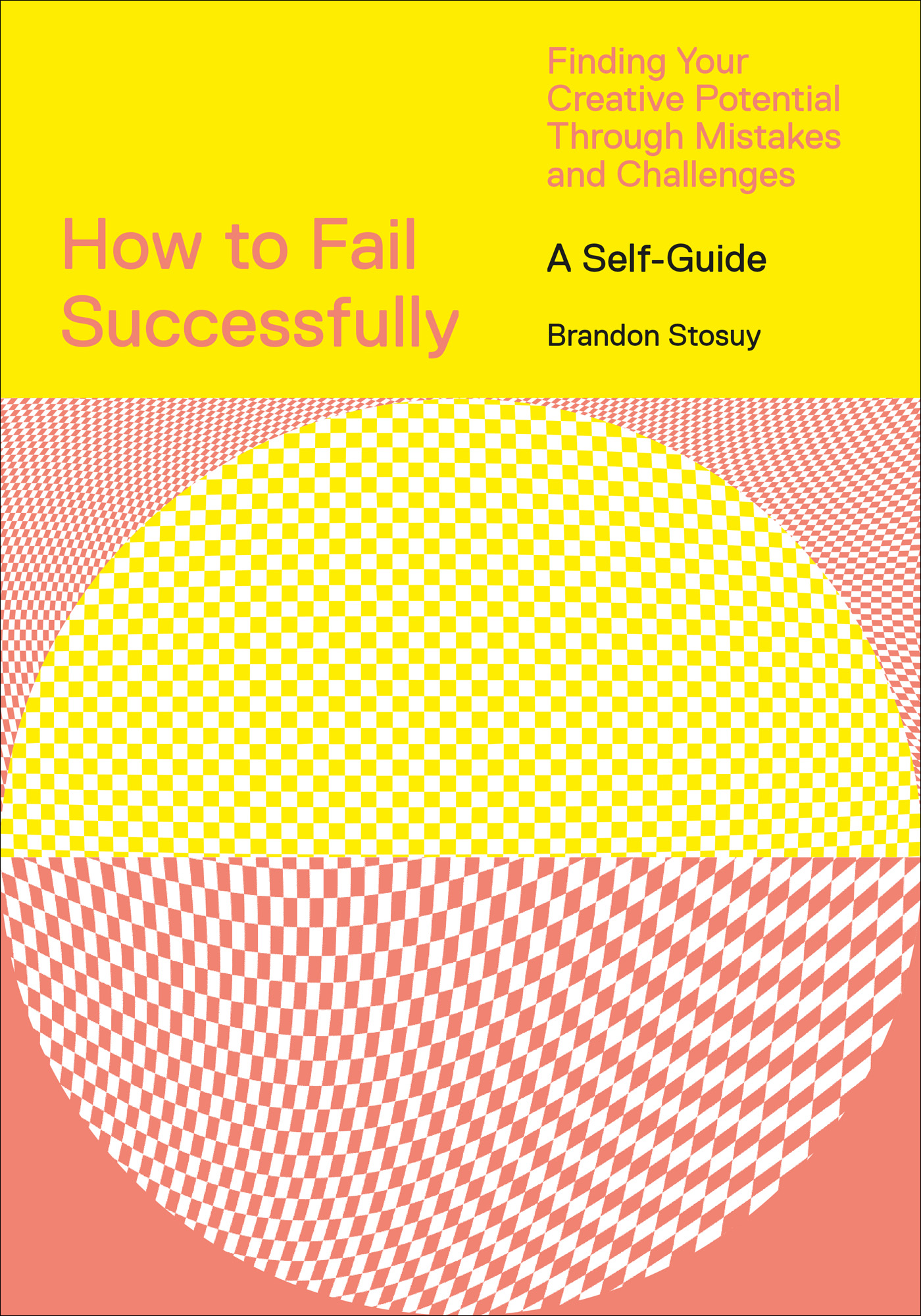

Editor: Samantha Weiner
Freelance Editor: Karrie Witkin
Designers: Kristian Henson and Jenice Kim
Managing Editor: Glenn Ramirez
Production Manager: Rachael Marks
Library of Congress Control Number: 2021946861
ISBN: 978-1-4197-4654-3
eISBN: 978-1-64700-378-4
Text 2022 Brandon Stosuy
Cover 2022 Abrams
Published in 2022 by Abrams Image, an imprint of ABRAMS. All rights reserved. No portion of this book may be reproduced, stored in a retrieval system, or transmitted in any form or by any means, mechanical, electronic, photocopying, recording, or otherwise, without written permission from the publisher.
Abrams Image books are available at special discounts when purchased in quantity for premiums and promotions as well as fundraising or educational use. Special editions can also be created to specification. For details, contact specialsales@abramsbooks.com or the address below.
Abrams Image is a registered trademark of Harry N. Abrams, Inc.

ABRAMS The Art of Books
195 Broadway, New York, NY 10007
abramsbooks.com
Contents

Introduction
Ive gotten used to hearing no in various forms throughout my life as an artist and as a person, which means Ive tried to form a creative practice and a living practice around building things for myself and others that weve otherwise been denied.
Hanif Abdurraqib
(Poet, writer, curator, author of They Cant Kill Us Until They Kill Us, A Fortune for Your Disaster, and A Little Devil in America)
I love the feeling of entering the unknown. You have to allow yourself a lot of mistakes, and then when you get it right, its so rewarding.
Bjrk
(Musician, songwriter, composer, producer, DJ)
Im way more scared of never failing than I am of failure itself. If Im failing it means theres still a lot to learn, and I hope I never stop learning.
Noelia Towers
(Visual artist)
Im not afraid of failure. If you challenge yourself in your day-to-day life, youre bound to fail, and Im not interested in simply coasting. I really do like working toward things. As my wife, Jane, said to someone the other day, Brandon likes to bite off more than he can chew, and then somehow find a way to chew it.
Heres a tangible example of a project that would have failed if I stopped chewing on it: this book. My agent and I had initially pitched a much different idea from what youre now holding. My original plan was to write a more straightforward memoir of sorts, the story of a working-class kid growing up in a small town who discovered punk and found a path to a life he hadnt expected. When my editor and collaborator, Karrie Witkin, read that proposal, she saw another idea within it: Instead of focusing on what Id done, what if we focused on how I did it? I was intrigued instead of insulted. And then I thought, because collaboration has always been central to what I do, what if we looked at how my collaborators and friends do what they do, too?
On the surface, this may not sound like failure, but thats only because we kept going. I could have easily said, No, that wasnt my intention, and taken the book idea somewhere else. The thing is, Im not sure the original idea was a good one. If I had seen the new suggestion as failure, or didnt allow space for collaboration, this book wouldnt exist. Sometimes failure occurs because you force a thing to fail due to ego or shortsightedness. If your first idea doesnt get to the finish line unchanged, is that failure? I dont think so. Making this series has been one of the most rewarding projects of my life.
As it stands, How to Fail Successfully is the third volume in a three-part series designed to demystify the creative process and guide people through different aspects of a creative life. The series begins with Make Time for Creativity (because carving out time for creative projects is challenging, but fundamental), followed by Stay Inspired (which focuses on strategies for generating creative ideas). How to Fail Successfully, then, is about how to keep going when you hit various roadblocks.
When I asked Anna Fox Rochinskione of the musicians I managehow she characterizes failure in the context of creativity, she responded: I think micro- and macro-failures are necessary for breakthroughs. The creative process is a series of many small (or big) judgment calls about whether or not to pursue an idea to completion. When you make something new, you start with an idea and submit yourself to a series of unknowns. Different types of failure will assail you at different moments. For that reason, How to Fail Successfully is divided into four chapters, each one representing an approach to different expressions of failure: Failure in Process (handling self-doubt while making work), Failure after Launch (dealing with disappointing results and criticism after the work is released), Failure, Time, and Timing (setting priorities based on what you can control), and Failure and Opportunity (seeing new possibilities in failure).
Failure is absolutely inevitable in our creative lives (and in life in general); we rarely make gains without mistakes, wrong directions, or any variety of pains. From a young age, we learn to look at what we did wrong with a projectthe red ink on the school essayand this lingers longer than any encouraging words we might have received. And when things go right, we tend to erase the mishaps that led to that success. We compartmentalize our successes and failures.
Part of sustaining a creative practice is recasting this kind of thinking and truly learning to see failure as an opportunity; its inextricable from success. Well also examine how our ideas of success evolve, which means constantly moving our goal posts to difficult-to-reach places. Writer Hua Hsu provides a poignant example of this: I think we have professional goals, which often involve just being able to continue doing whatever it is youre doing. And then sometimes we have these more abstract goals: In my case, theres a book Ive been working onor just thinking about, actuallysince I was twenty-one. My personal feeling of success is reserved for this thing thats very intimate and as yet unformed, and there have been times when Ive felt bummed that professionalism has kept me from doing it. Its a type of failure, insofar as its failing the principles, impulses, or desires that led me to picking up a pen in the first place.
External validation wont cement your successes or quell your failures. The real work is internal and ongoing.
A Type of Lesson
Failure is how you learn. Its just a lesson. And if you see it as anything else and project it onto your self-worth, you will crumble. That low self-worth takes up a lotof room in your head. You will give space to jealousy, bitterness, comparing yourself to your peers... and thats less room for the creative process to unfold.
Elle Nash
(Writer, critic, author of Animals Eat Each Other and

